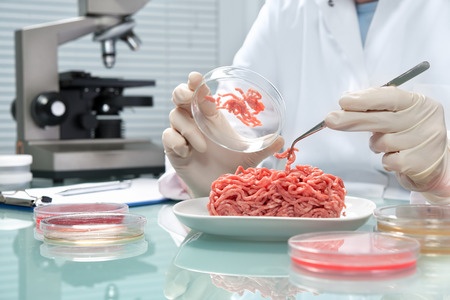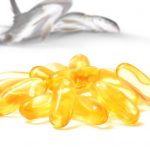
The TBARS method is an assay for measuring the end products of lipid peroxidation or more specifically malondialdehyde (MDA) need not cause controversy but it was worth noting how attempts to improve its application have fared.
The TBARS assay as it is known (the thiobarbituric acid reactive substances assay) has been used for many years as a method for detecting end products of lipid peroxidation. It was first discovered when the reaction between MDA and 2-thiobarbituric acid (TBA) was analysed and the level of MDA could be correlated with lipid oxidation (Bernheim et al., 1948). It was then used as the standard test for rancidity in milk (Dunkley and Jennings, 1951; Dunkley and Franke, 1967) as well as meat which was more accurate than a direct peroxide measure (Zipser et al., 1964; Fernandez et al., 1997). It is now widely employed because there are so few other methods covering this aspect of food quality which are as simple to use, inexpensive and with its rapidity suited to a large number of samples, which can be assessed with little effort (Armstrong and Browne, 1994).
The Reactions In The TBARS Method
The assay relies on the reaction of 2-thiobarbituric acid (TBA) with malondialdehyde to yield a red chromogenic fluorescent substance measured spectrophotometrically between 530 and 537nm and is usually expressed as mgs of malondialdehyde per kg of substance.
Malondialdehyde (MDA) itself is the major carbonyl oxidation product derived mainly from polyunsaturated fatty acids with at least two conjugated double bonds. To improve upon the measurement of MDA, modifications using HPLC methods have also been devised (Agarwal and Chase, 2002).
Unfortunately, the specificity of the method for measuring MDA leaves something to be desired because other substances can generate the same end product with TBA, so it is not entirely specific a measure for lipid peroxidation. Attempts to understand the errors began with investigation of the chemistry behind the reaction (Tarladgis et al., 1964). MDA also binds to other substances such as proteins, amino acids and glycogen which can then lead to under reporting of values (Kwon et al., 1965). Hence the need to report results as TBAR values.
One reason for non-specificity is a result of the acid-heating step which attempts to release bound MDA from protein causing the formation of TBA/MDA-type derivatives (Liu et al., 1997). Other interfering substances include caseinate in milk (Caprioli et al., 2010). It also suffers from over-inflation of lipid peroxidation values when other interfering substances take part in the reaction too. One method to overcome this problem has been to subtract the absorbance at 532 nm of an unreacted control where other coloured substances such as anthocyanins in plant extracts were present (Hodges et al., 1998). Other attempts to standardise the assay have been posited when assessing in vitro lipid peroxidation (Rael et al., 2004). When a variety of lipids are available, individual fatty acids have differing degrees of unsaturation which leads to an unspecific but general measure. Their findings suggested standardisation using multiple fatty acid concentrations.
Markers In Food
Researchers making assessments on how diets rich in dietary oils or in other additives affect meat quality have used the TBARS method to make judgements on lipid quality in animal muscle (Rey et al., 2001). It is also a useful and simple screen for peroxides from lipid breakdown in blood plasma and serum (Yagi, 1998). In fact, the technique has long been the subject of assessment for measuring oxidative stress in the etiology of chronic conditions such as cardiovascular disease (Valenzuela, 1991; Trevisan et al., 2001). It was recognised early on that the standard assay was not suitable for measuring MDA in human plasma which was essential if oxidative stress was to be measured accurately (Largilliere and Melancon, 1988). Markers of oxidative stress, besides plasma derived thiobarbituric acid substances also include measures for erythrocyte glutathione and glutathione peroxidase. The non-specificity of the TBARS assay is problematic especially for assessing lipid damage in human plasma. It has been a condition in some EFSA opinions that a more specific method be found. Isoprostane might be more suitable but is much more difficult to measure unless HPLC or ELISA is available.
With time, the TBARS method may well become superseded by others but it still remains the method of choice for assessing lipid oxidation. It’s limitations are understood and it provides a general assay for screening and monitoring lipid peroxidation.
References
Agarwal, R. and Chase, S.D. (2002) Rapid, fluorimetric-liquid Chromatographic determination of malondialdehyde in biological samples. J. Chromatography B 775 (1) pp. 121-126 (Article)
Armstrong, D., and Browne, R. (1994) The analysis of free radicals, lipid peroxides, antioxidant enzymes and compounds to oxidative stress as applied to the clinical chemistry laboratory. Free Radicals in Diagnostic Medicine 366 pp. 43-58
Bernheim, F., Bernheim, M.L. Wilbur, K.M. (1948) The reaction between thiobarbituric acid and the oxidation products of certain lipids. J.Biol. Chem. pp. 257-264
Dunkley, W.L. and Jennings, W.G. (1951) A Procedure for application of the thiobarbituric acid test to milk. J. Dairy Sci., 34 (11) pp. 1064-1069
___________and Franke, A.A. (1966) Evaluating Susceptibility Of Milk To Oxidised Flavor. J. Dairy Sci., 50 (1) pp. 1-9
Fernandez J, Perez-Alvarez JA and Fernandez-Lopez, J.A. (1997) Thiobarbituric acid test for monitoring lipid oxidation in meat. Food Chem. 59(3): pp. 345-353
Hodges, D.M., DeLong, J.M., Forney, C.F., and Prange, R.K. (1999). Improving the thiobarbituric acid-reactive substance assay for estimating lipid peroxidation in plant tissues containing anthocyanin and other interfering compounds. Planta 207 pp. 604–611.
Kwon, T.-W., Menzel, D.B., Olcott, H.S. (1965) Reactivity of Malonaldehyde with Food Constituents. J. Food Sci. 30 (5) pp. 808-815
Largilliere C., Melancon S.B. (1988) Free malondialdehyde determination in human plasma by high-performance liquid chromatography Anal. Biochem. 170 (1), pp. 123-126.
Liu, J., Yeo, H. C., Doniger, S. J. and Ames, B. N. (1997) Assay of aldehydes from lipid peroxidation: gas chromatograph mass spectrometry compared to thiobarbituric acid. Anal. Biochem. 245, pp. 161-166.
Rael, L.T., Thomas, G.W., Craun, M.L., Curtis, C.G., Bar-Or, R., Bar-Or, D., (2004). Lipid peroxidation and the thiobarbituric acid assay: standardization of the assay when using saturated and unsaturated fatty acids. J. Biochem. Mol. Biol. 37, pp. 749–752.
Rey, A. I., J. P. Kerry, P. B. Lynch, C. J. Lopez-Bote, D. J. Buckley, and P. A. Morrissey. 2001. Effect of dietary oils and α-tocopheryl acetate supplementation on lipid (TBARS) and cholesterol oxidation in cooked pork. J. Anim. Sci. 79 pp. 1201–1208.
Tarladgis, B. G., A. M. Pearson, and L. R. Dugan, Jr. (1964) Chemistry of the 2-thiobarbituric acid test for determination of oxidative rancidity in foods. II. Formation of the TBA – malonaldehyde complex without acid-heat treatment. J. Sci. Food Agr. 15, pp. 602.
Trevisan, M., Browne, R., Ram, M., Muti, P., Freudenheim, J., Carosella, A.M., Armstrong, D. (2001) Correlates of Markers of Oxidative Status in the General Population. Amer. J. Epidemiology 154(4) pp. 348-356
Yagi, K. (1998) Simple assay for the level of total lipid peroxides in serum or plasma. Methods Mol. Biol. 108 pp. 101-106
Zipser, M. W., T. W. Kwon, and B. M. Watts. (1964) Oxidative changes in cured and uncured frozen cooked pork. J. Agr. Food Chem. 12, pp. 105.


I’m not that much of a online reader to be honest but your blogs really nice, keep it up! I’ll go ahead and bookmark your website to come back later on. All the best
I like this particular piece as I used it in my thesis !